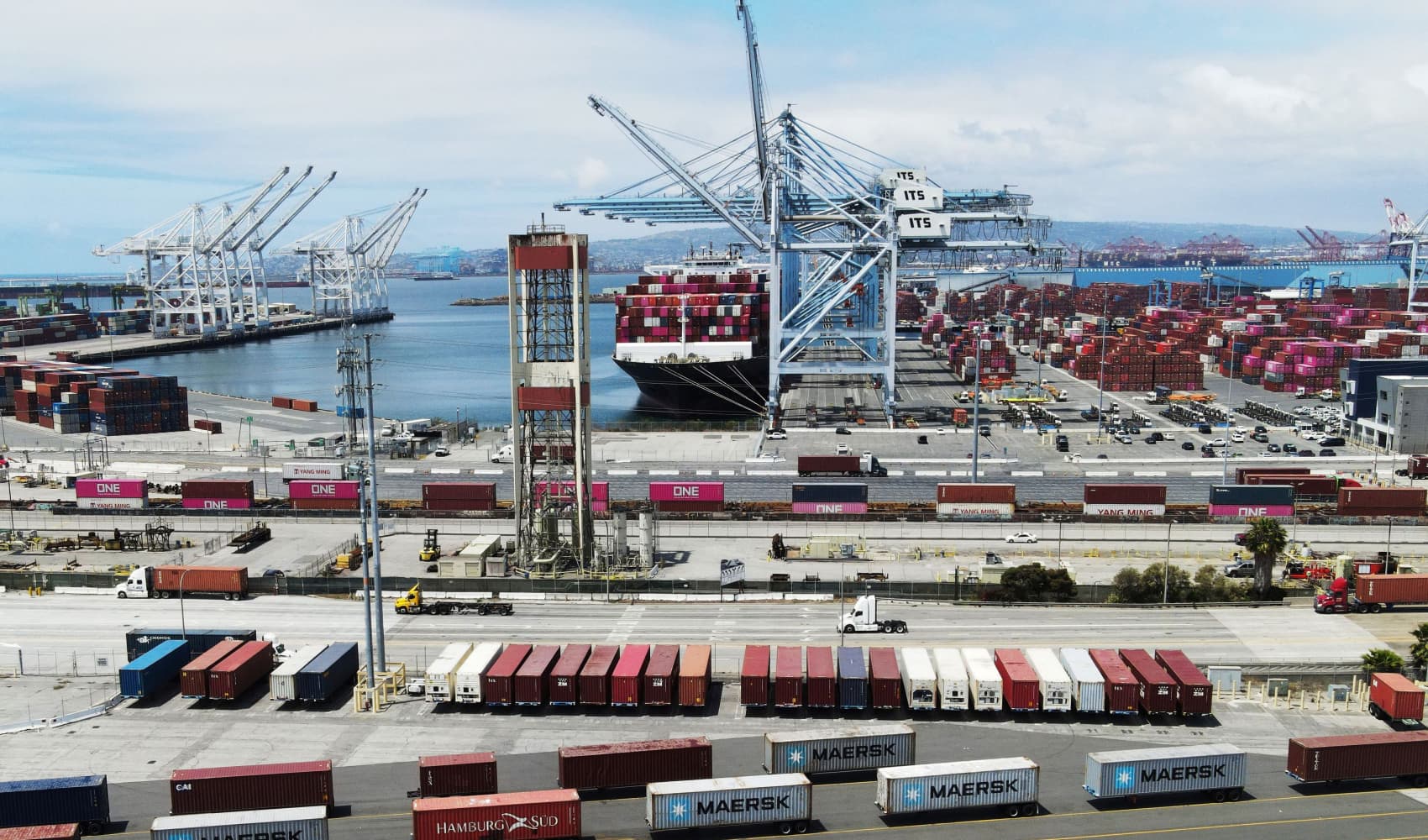Buy New Smartphone NOW! Retail Expert Warns of Tariff Hikes
Smartphone Shoppers Beware: Retail Expert Urges "Buy Now" Before Tariffs Hit!
Introduction: The Clock is Ticking for Smartphone Deals
Are you eyeing that shiny new smartphone? Dreaming of upgrading to the latest model with all the bells and whistles? Well, listen up, because this might be the best time to pull the trigger. A retail expert is sounding the alarm, urging consumers to "definitely buy right now" if they want a new smartphone. Why the urgency? The looming threat of escalating tariffs on Chinese-made electronics could soon send prices soaring. Let's dive into the details and see why you might want to act fast!
The Tariff Tango: A Trade War Brewing
The current trade relationship between the U.S. and China is…complicated. It's like a tango, with both sides stepping forward and back, sometimes leading, sometimes following. Tariffs, taxes on imported goods, are a major part of this dance. Right now, some Chinese goods face significant tariffs, and the fear is that these tariffs could expand to include smartphones.
What Exactly are Tariffs?
Imagine you're buying a delicious imported cheese. A tariff is like adding a tax to that cheese before you buy it. The store has to pay the tax, and they'll likely pass that cost onto you, the consumer. Tariffs work the same way with electronics, potentially making that new smartphone a lot pricier.
Trump's Tariff Vision: Made in the USA?
Former President Donald Trump has long advocated for bringing manufacturing back to the U.S., and tariffs are seen as a way to incentivize this. The idea is that if it's more expensive to import goods from China, companies will be more likely to produce them here.
The Apple Example: iPhones in America?
One of Trump's specific goals was to encourage Apple to manufacture iPhones in the U.S. His administration believed that the U.S. has the labor, workforce, and resources to make it happen. "He believes we have the labor, we have the workforce, we have the resources to do it," said White House Press Secretary Karoline Leavitt.
The Reality Check: A Complex Supply Chain
While the "Made in the USA" vision sounds appealing, experts say it's far from simple. Moving an entire supply chain, the complex network of suppliers and manufacturers needed to build a smartphone, is a massive undertaking. It’s like trying to move an entire city! It's not something that can happen overnight.
Needham's Analysis: Years, Not Months
Needham analyst Laura Martin believes that even if Apple wanted to move its production to the U.S., it would take years. This highlights the sheer complexity of shifting such a massive operation. It’s not as simple as just flipping a switch.
The iPhone's Current Home: China
For the foreseeable future, the vast majority of iPhones will continue to be manufactured in China. This makes them potentially vulnerable to U.S. tariffs, a factor that could significantly impact their price tag.
The Exemption: A Temporary Reprieve?
So far, smartphones and other Chinese-made electronics have been spared from the harshest tariffs. This has allowed consumers to continue buying these devices at relatively stable prices. But is this exemption permanent? That's the million-dollar question.
The "Buy Now" Warning: Why the Urgency?
The retail expert's warning stems from the uncertainty surrounding the future of these tariff exemptions. If the exemptions are lifted or new tariffs are imposed, the price of smartphones could jump significantly. It's like a game of musical chairs, and you don't want to be left standing when the music stops!
Potential Price Hikes: How Much Could Smartphones Cost?
Estimating the exact price increase is difficult, but even a modest tariff could add hundreds of dollars to the cost of a new smartphone. That's a significant chunk of change that could be better spent on other things, like travel, entertainment, or… more gadgets!
Beyond iPhones: The Impact on the Entire Smartphone Market
It's not just iPhones that could be affected. Many other smartphone brands also rely on manufacturing in China. A broader application of tariffs would impact the entire smartphone market, potentially leading to higher prices across the board.
What Can Consumers Do? Proactive Strategies
So, what can you do to protect yourself from potential price increases? Here are a few strategies:
- Research current smartphone prices: Get a baseline understanding of what models you're interested in cost right now.
- Compare prices from different retailers: Don't just settle for the first price you see. Shop around for the best deal.
- Consider buying refurbished: A certified refurbished smartphone can offer significant savings without sacrificing quality.
- Act sooner rather than later: If you're planning to upgrade anyway, now might be the time to do it before tariffs potentially impact prices.
Understanding Your Needs: What Features are Essential?
Before you rush out and buy a new smartphone, take a moment to consider what features are truly important to you. Do you need the latest camera technology? Are you a heavy gamer who needs a powerful processor? Identifying your priorities can help you choose a phone that meets your needs without breaking the bank.
Budget Considerations: Finding the Sweet Spot
Set a budget for your new smartphone and stick to it. There are plenty of excellent smartphones available at various price points. Don't feel pressured to buy the most expensive model if it's beyond your means.
Conclusion: Seize the Opportunity, But Shop Smart
The message is clear: if you're in the market for a new smartphone, now may be the optimal time to buy. The potential for escalating tariffs on Chinese-made electronics could lead to price increases in the near future. However, it's crucial to do your research, compare prices, and choose a smartphone that meets your needs and budget. Don't panic buy! But be aware of the potential for change.
Frequently Asked Questions (FAQs)
Q1: What exactly are tariffs, and how do they affect smartphone prices?
Tariffs are taxes imposed on imported goods. When a tariff is placed on smartphones made in China, the cost of importing those phones increases. This increased cost is often passed on to consumers in the form of higher retail prices.
Q2: Are all smartphones made in China subject to these potential tariffs?
While many smartphones are manufactured in China, not all are. However, a significant portion of the market relies on Chinese manufacturing, so a broad tariff policy could impact prices across various brands and models.
Q3: How much could smartphone prices increase if tariffs are implemented?
The exact price increase is difficult to predict, as it depends on the specific tariff rate and the manufacturer's pricing strategy. However, even a moderate tariff could add hundreds of dollars to the cost of a new smartphone.
Q4: Is there anything consumers can do to avoid paying higher prices due to tariffs?
Yes! Consider buying now before tariffs potentially take effect, compare prices from different retailers, explore refurbished options, and prioritize the features that are most important to you to stay within your budget.
Q5: Will tariffs encourage smartphone companies to manufacture in the U.S.?
While that's the intended goal of tariffs, experts believe that moving an entire supply chain to the U.S. would be a complex and time-consuming process. It's unlikely to happen quickly, so consumers should be prepared for potential price fluctuations in the meantime.


